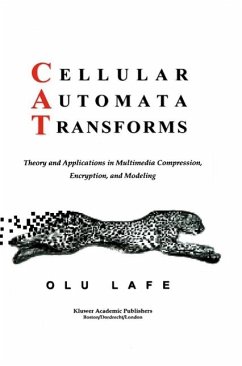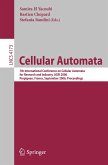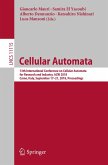Cellular Automata Transforms describes a new approach to using the dynamical system, popularly known as cellular automata (CA), as a tool for conducting transforms on data. Cellular automata have generated a great deal of interest since the early 1960s when John Conway created the `Game of Life'. This book takes a more serious look at CA by describing methods by which information building blocks, called basis functions (or bases), can be generated from the evolving states. These information blocks can then be used to construct any data. A typical dynamical system such as CA tend to involve an infinite possibilities of rules that define the inherent elements, neighborhood size, shape, number of states, and modes of association, etc. To be able to build these building blocks an elegant method had to be developed to address a large subset of these rules. A new formula, which allows for the definition a large subset of possible rules, is described in the book. The robustness of this formula allows searching of the CA rule space in order to develop applications for multimedia compression, data encryption and process modeling. Cellular Automata Transforms is divided into two parts. In Part I the fundamentals of cellular automata, including the history and traditional applications are outlined. The challenges faced in using CA to solve practical problems are described. The basic theory behind Cellular Automata Transforms (CAT) is developed in this part of the book. Techniques by which the evolving states of a cellular automaton can be converted into information building blocks are taught. The methods (including fast convolutions) by which forward and inverse transforms of any data can be achieved are also presented. Part II contains a description of applications of CAT. Chapter 4 describes digital image compression, audio compression and synthetic audio generation, three approaches for compressing video data. Chapter 5 contains both symmetric and public-key implementation of CAT encryption. Possible methods of attack are also outlined. Chapter 6 looks at process modeling by solving differential and integral equations. Examples are drawn from physics and fluid dynamics.
Dieser Download kann aus rechtlichen Gründen nur mit Rechnungsadresse in A, B, BG, CY, CZ, D, DK, EW, E, FIN, F, GR, HR, H, IRL, I, LT, L, LR, M, NL, PL, P, R, S, SLO, SK ausgeliefert werden.









